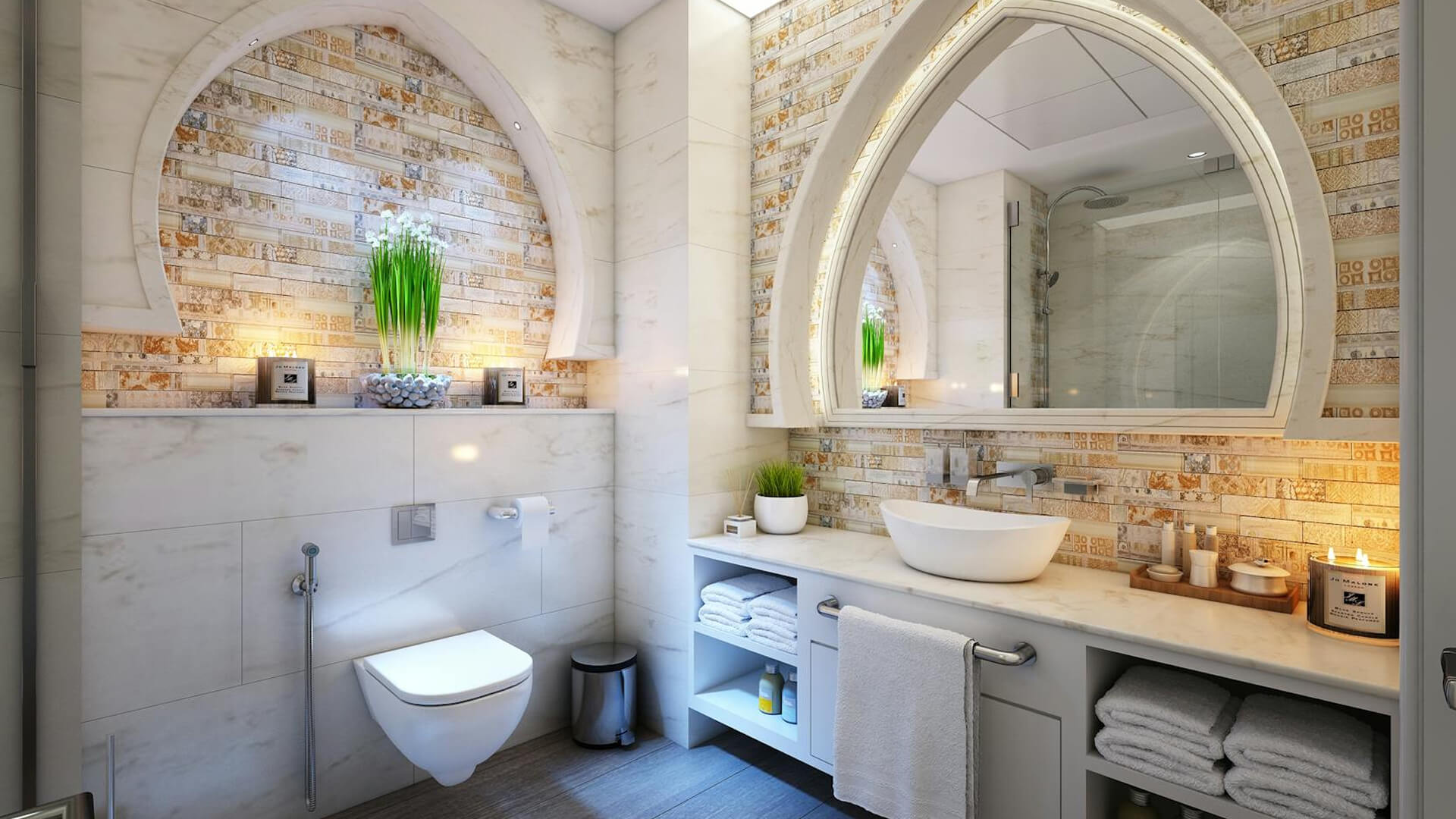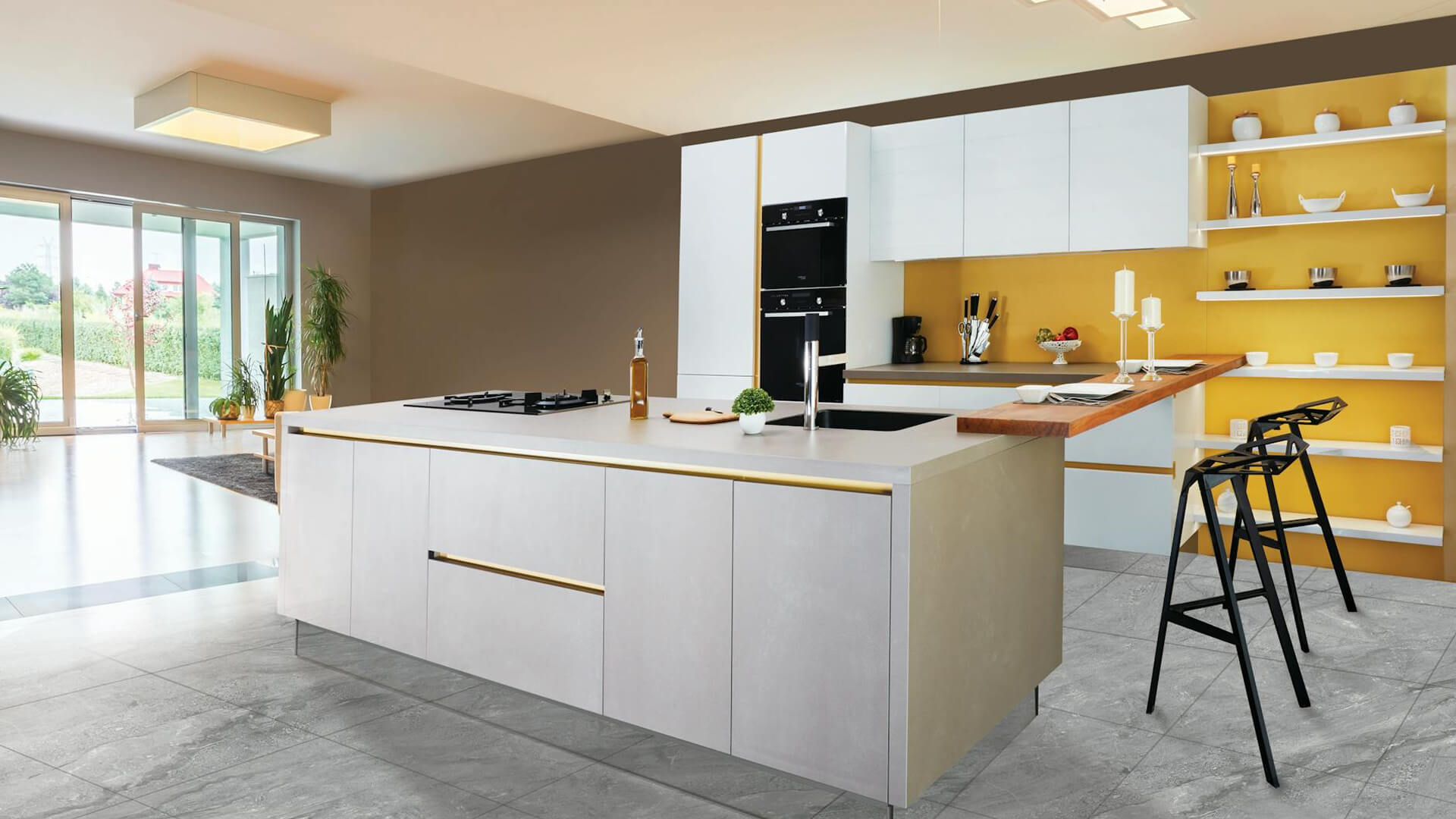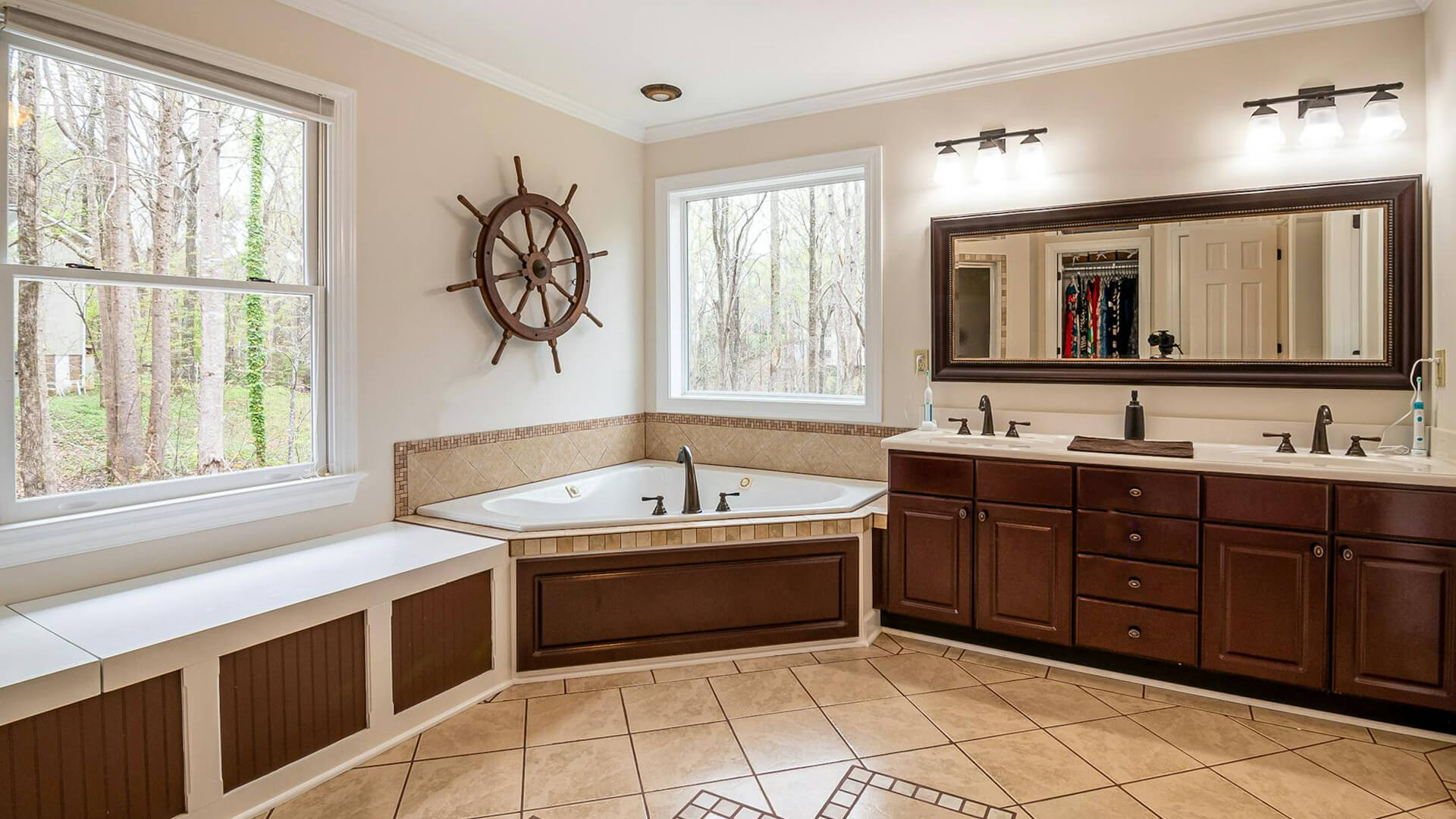

November 12, 2023

Living in a smaller home doesn't mean sacrificing style or functionality. With smart design choices and strategic remodeling, you can make even the most compact spaces feel open, bright, and spacious. At Rideout Contracting, we specialize in transforming small areas into efficient, beautiful living spaces. Here are our top tips for maximizing every square foot of your home.
Whether you're living in an urban apartment, a cozy starter home, or downsizing to a more manageable space, small square footage presents unique challenges—and incredible opportunities. The key is working smarter, not harder, using every inch intentionally while maintaining a sense of airiness and avoiding the cramped feeling that poorly designed small spaces can have. Let's explore strategies that actually work.
One of the easiest and most effective ways to make a small space feel larger is through strategic color choices. Light, neutral colors—whites, soft grays, pale beiges, and gentle pastels—reflect more light and create an airy, open feeling that visually expands space. Dark colors absorb light and can make rooms feel smaller and more enclosed, though they can work in small doses as accent walls or in spaces where coziness is desired.
The monochromatic approach works particularly well in small spaces. Paint walls, ceilings, and trim in similar tones to blur boundaries and expand visual space. When everything flows together without stark contrasts, the eye can't easily determine where walls end and ceilings begin, creating the illusion of expanded dimensions. Consider painting ceilings slightly lighter than walls to add height, or use the same color throughout for seamless continuity.
Reflective surfaces amplify light and create depth. Mirrors are the most obvious choice—a large mirror can literally double the perceived size of a space by reflecting both light and views. Position mirrors opposite windows to bounce natural light deeper into rooms. Mirrored closet doors, mirrored backsplashes in kitchens, or a statement mirror wall in a narrow hallway all serve double duty as functional and space-expanding elements.
Beyond mirrors, incorporate other reflective materials. Glass table tops keep sight lines open and don't visually clutter space the way solid tables do. Glossy finishes on cabinetry reflect light better than matte finishes. Metallic accents in hardware, light fixtures, and decor catch and bounce light around rooms. Even semi-gloss paint on trim and doors reflects more light than flat paint, subtly brightening spaces.
Don't overlook the impact of flooring color. Light-colored floors—pale wood, light tile, or light-colored carpet— reflect more light upward and make rooms feel more spacious. If you love dark floors, balance them with very light walls and plenty of lighting to prevent the room from feeling closed in.
When floor space is limited, the solution is simple: look up. Most people underutilize vertical space, leaving valuable storage and display potential untapped. Vertical storage solutions don't just provide more storage—they draw the eye upward, making ceilings appear higher and rooms feel more spacious.
Floor-to-ceiling bookshelves or storage units create dramatic vertical lines that emphasize height. These don't have to be custom built-ins, though those maximize every inch—even tall, narrow stock shelving units can achieve this effect. The key is going all the way to the ceiling rather than stopping short and leaving dead space above.
In kitchens, stack cabinets to the ceiling even if the top cabinets are harder to reach—use them for items you don't need often. Install pot racks or hanging rails to get cookware off counters and out of lower cabinets. Use the space above doorways for small shelves holding cookbooks or decorative items. Mount magnetic knife strips on walls instead of using counter knife blocks.
Bathrooms benefit enormously from vertical thinking. Tall, narrow storage towers fit in surprisingly small footprints while providing significant storage. Wall-mounted cabinets above toilets utilize otherwise wasted space. Vertical shower organizers or corner caddies keep products off tub edges. Mount towel bars at multiple heights on walls rather than using floor-standing towel racks.
In bedrooms, consider vertical storage headboards with built-in shelving or cabinets that eliminate the need for nightstands. Use wall-mounted reading lights instead of table lamps. Install closet systems that double-hang clothing or use vertical space for shoe storage and accessories.
At Rideout Contracting, we design custom built-ins that maximize vertical space while maintaining clean lines and functionality. We understand how to properly anchor heavy shelving systems to studs, how to design proportions that look balanced rather than awkwardly tall, and how to incorporate vertical storage that enhances rather than overwhelms your space.
In small spaces, every piece of furniture should work overtime. Single-purpose furniture is a luxury that compact homes can't afford. The good news is that multi-functional furniture has evolved far beyond clunky futons—today's options are stylish, comfortable, and genuinely functional.
Storage ottomans provide seating, footrests, and hidden storage for blankets, magazines, or toys. Choose larger ones that can serve as coffee tables when topped with a tray. Sofa beds have come a long way from uncomfortable metal bars— modern memory foam options provide legitimate sleeping comfort for guests. Consider daybeds with trundles that pull out for additional sleeping space in spare rooms or offices.
Dining tables that extend only when needed save significant space. Drop-leaf tables fold down when not in use, taking up minimal floor space. Nesting tables provide surface area when needed but tuck away neatly. Wall-mounted fold-down tables can serve as dining surfaces, desks, or craft areas, then fold completely flat against the wall when not needed.
Murphy beds are perhaps the ultimate space-saving furniture. Modern systems are easy to operate and can incorporate shelving, desks, or sofas that remain functional when the bed is stored. This allows a spare bedroom to serve as a home office, exercise room, or hobby space during the day, converting to guest quarters when needed. Some systems even include integrated desks that lift with the bed, transforming a home office into a bedroom in seconds.
Built-in window seats with storage underneath serve triple duty: seating, storage, and architectural interest. Add cushions and pillows for a cozy reading nook while storing books, games, or linens in the base. Storage beds with built-in drawers or lift-up platforms eliminate the need for separate dressers. Desks with built-in filing and storage keep office supplies organized without requiring additional furniture.
When selecting furniture for small spaces, also consider scale. Oversized furniture overwhelms small rooms. Choose pieces that fit the scale of the space—slim-profile sofas, armless chairs that take less floor space, and furniture with exposed legs that create visual lightness rather than heavy, skirted pieces that sit directly on floors.
Creating clear sightlines throughout your home makes spaces feel more connected and larger by allowing the eye to travel unobstructed. When you can see from one area into another, both spaces feel bigger because you're perceiving the combined square footage rather than isolated rooms.
Removing non-structural walls creates open floor plans between kitchen, dining, and living areas—the most impactful renovation for small spaces. This doesn't mean eliminating all walls and creating one giant room. Strategic wall removal between specific areas can dramatically improve flow and spaciousness while maintaining necessary privacy in bedrooms and bathrooms.
If full wall removal isn't possible or desirable, half-walls or pony walls maintain some definition between spaces while opening up views. These work particularly well between kitchens and dining or living areas, providing surface area for serving or display while keeping sight lines open. Pass-throughs or large openings cut into existing walls achieve similar effects with less structural work.
Glass doors separate spaces without blocking light or views. French doors between rooms maintain privacy and sound control when needed but feel much more open than solid doors. Sliding glass barn doors offer a modern aesthetic while saving the floor space that swinging doors require. Glass panel doors or doors with large windows allow natural light to flow between rooms even when doors are closed.
Interior windows are gaining popularity as a way to borrow light from one room to brighten interior spaces. A window between a bathroom and bedroom allows natural light to reach the bathroom while maintaining privacy with frosted glass. Windows between kitchens and adjacent rooms create connection while defining spaces.
Furniture placement affects sightlines too. Avoid placing tall furniture pieces in pathways or areas that block views across rooms. Keep central areas relatively open, pushing furniture against walls when possible. Use transparent or low-profile furniture that doesn't obstruct views—think glass tables, low sofas, and open shelving rather than solid bookcases.
Rideout Contracting can assess your home's structure and recommend safe, effective ways to open up your layout. We'll identify load-bearing walls that require special consideration, suggest alternatives if removal isn't feasible, and handle all necessary permits and structural work to ensure changes are done correctly and safely.
Natural light makes any space feel more open, inviting, and spacious. Dark rooms feel cramped and small, while light-filled spaces feel airy and expansive even with the same square footage. Maximizing natural light should be a priority in any small space renovation or design plan.
Start with windows. Remove heavy drapes and dark curtains that block light. Replace them with sheer curtains or light-filtering blinds that provide privacy while allowing maximum light penetration. If privacy allows, consider leaving windows completely bare. Mount curtain rods high and wide—several inches above windows and extending beyond window frames—to make windows appear larger and allow maximum light when curtains are open.
If your space lacks sufficient windows, consider adding them. This requires structural work but can transform dark, cramped spaces into bright, inviting rooms. Skylights bring natural light into interior rooms or spaces where wall windows aren't possible. Solar tubes (tubular skylights) are more affordable alternatives that channel daylight through reflective tubes from roof to ceiling, perfect for hallways, closets, or bathrooms without direct roof access.
Enlarging existing windows makes dramatic impact. Replacing standard windows with larger ones or adding additional windows where appropriate floods spaces with light. Consider floor-to-ceiling windows or glass doors leading to outdoor spaces—these blur the boundary between inside and outside, making interior spaces feel much larger.
Replace solid interior doors with glass-panel or French doors to allow light to flow between rooms. This is particularly effective between hallways and rooms with windows, allowing natural light to illuminate circulation spaces that would otherwise be dark. Even replacing solid bathroom doors with frosted glass doors maintains privacy while borrowing light.
Light-colored window treatments reflect rather than absorb light. White or cream sheers maximize light transmission. Top-down/bottom-up shades allow light from upper portions of windows while maintaining privacy in lower sections. Avoid heavy, dark window treatments that absorb light and visually shrink windows.
Mirrors and reflective surfaces positioned to catch and bounce natural light amplify its effect. A mirror positioned opposite or adjacent to windows reflects daylight deeper into rooms. Glossy surfaces on furniture, light fixtures, and decor help distribute natural light throughout spaces.
Clutter is the mortal enemy of small spaces. Even the most beautifully designed compact space feels cramped and chaotic when cluttered with visible belongings. Smart storage that keeps things organized and out of sight is absolutely essential for small-space living.
Start by utilizing every available space. Under-bed storage in rolling bins or drawers captures otherwise wasted space. Platform beds with built-in drawers or lift-up bases provide massive storage without additional floor space. Over-door organizers work in closets, bathrooms, pantries, and bedrooms. The backs of cabinet doors can hold spice racks, cutting boards, cleaning supplies, or hair tools.
Pull-out systems maximize accessibility in deep cabinets. Pull-out pantry shelves bring items from the back within easy reach. Pull-out cutting boards, trash bins, and recycling centers keep counters clear. Drawer dividers and organizers prevent junk drawer chaos and make better use of drawer space—you can fit more when items are organized vertically rather than tossed in randomly.
Corner spaces are notoriously difficult but valuable. Lazy susans in corner cabinets make items accessible that would otherwise be lost in deep corners. Corner drawer systems provide surprising storage in otherwise awkward spaces. Corner shelving units in rooms utilize corners that might otherwise hold nothing but dust.
Built-in storage is the gold standard for small spaces because it can be customized to fit exact dimensions and needs. Recessed medicine cabinets use wall cavity space rather than protruding into bathrooms. Built-in bookshelves along walls provide storage without taking floor space. Window seat storage, banquette dining storage, and staircase storage utilize areas that would otherwise be purely decorative or functional in single ways.
Custom closet systems transform standard closets into highly efficient storage. Double-hanging rods, adjustable shelving, specialized organizers for shoes and accessories, and drawer systems maximize every inch. A professionally designed closet system can nearly double usable storage compared to basic rod-and-shelf configurations.
Vertical storage keeps things off floors and counters. Wall-mounted systems for bikes, tools, sports equipment, and gear reclaim floor space in garages and entries. Pegboard walls with adjustable hooks and shelves adapt to changing needs. Vertical file organizers keep paperwork tidy without bulky filing cabinets.
At Rideout Contracting, we design storage solutions tailored to your specific needs, making every inch count while maintaining clean, uncluttered aesthetics. We assess your belongings, lifestyle, and space to create custom solutions that actually work for how you live, not just generic storage that looks good but doesn't function well.
Traditional swing doors require significant clearance space that can be precious in small homes. Every door needs a circle of clear floor space for its swing path, space that can't be used for furniture or traffic. In tight quarters, this wasted space adds up quickly. Alternative door systems eliminate this problem while often adding aesthetic appeal.
Pocket doors slide completely into wall cavities, disappearing when open. This frees up floor space on both sides of the door that would otherwise need to remain clear. When closed, they provide full privacy and sound dampening just like traditional doors. Pocket doors work beautifully for bathrooms, closets, and between living spaces. The drawback is they require wall space without plumbing or electrical—something to consider during renovation planning.
Barn-style sliding doors mounted on exterior track systems save floor space while adding architectural interest and modern farmhouse aesthetic. These work well when pocket door installation isn't feasible because they don't require wall cavity space. They slide along the wall surface, requiring wall space on one side but no door swing space. Single or double sliding barn doors can close off bedrooms, bathrooms, closets, or divide open living spaces.
Sliding glass doors on interior track systems create modern, lightweight space dividers. Frosted or textured glass provides privacy while allowing light transmission. These work particularly well in contemporary spaces between bedrooms and bathrooms or dividing multipurpose rooms.
Bifold doors fold in sections rather than swinging, requiring less clearance space. These are common for closets but can work for other applications too. European-style bifold systems with larger, fewer panels create more elegant solutions than traditional multi-panel closet bifolds.
Consider whether doors are even necessary. Doorway openings without doors maximize flow and openness in small spaces. This works in areas where privacy and sound control aren't priorities—between kitchens and dining rooms, between living rooms and hallways, or in walk-in closets where a door might feel claustrophobic.
Our team can install various door styles that save space without sacrificing privacy or style. We'll help you evaluate which systems work best for your specific spaces, handle any required framing modifications, and ensure smooth operation with proper installation and quality hardware.
Flooring significantly impacts how large a space feels, yet it's often overlooked in space-planning discussions. The right flooring choices create continuity, reflect light, and guide the eye in ways that visually expand space.
Consistency is key. Using the same flooring throughout your home—or at least throughout main living areas—creates visual continuity that makes the space feel more expansive. When flooring changes from room to room, each space feels like a separate box. Continuous flooring allows the eye to travel uninterrupted, perceiving the combined square footage as one flowing space.
Large-format tiles or wide-plank flooring with fewer seams creates a more streamlined look that feels more spacious. Lots of grout lines or narrow planks chop up floors visually, making spaces feel smaller and busier. Larger tiles (24" × 24" or larger) or wide planks (6" or wider) create calmer, more expansive visual fields.
Installation patterns affect perceived space. Diagonal patterns make narrow rooms appear wider by drawing the eye across corners. In rectangular rooms, running planks along the longest wall emphasizes length. Herringbone or chevron patterns add visual interest while creating diagonal lines that expand space perceptually. Straight patterns (parallel to walls) are most neutral but still work well, especially with large-format materials.
Color matters. Light-colored flooring reflects more light upward and opens up spaces. White, cream, light gray, or pale wood tones make rooms feel more spacious. Dark floors can be dramatic and hide dirt well but absorb light and can make small spaces feel smaller unless balanced with very light walls and ample lighting.
Finish affects space perception too. Glossy finishes reflect light and add depth, making spaces feel larger. Matte or textured finishes absorb light and feel cozier but smaller. Semi-gloss or satin finishes offer a middle ground—some light reflection without high-maintenance high-gloss surfaces that show every fingerprint and scuff.
Avoid chopping up floors with different materials in small spaces. While transitioning between carpet and hard surfaces makes sense at bedrooms, using multiple hard-surface materials in open areas (tile in kitchen, wood in living room, different tile in entry) creates visual fragmentation that makes the space feel smaller. Stick with one material throughout main areas.
Rideout Contracting offers expert flooring installation with careful attention to layout patterns that maximize visual space. We help you select materials and patterns that work with your space's dimensions, natural light, and design goals, then install them with precision for beautiful, lasting results.
Transforming a compact home into a spacious, functional haven requires creative thinking and expert execution. At Rideout Contracting, we've helped countless homeowners maximize their small spaces with custom solutions that combine smart design with quality craftsmanship. Whether you're looking to reorganize, renovate, or completely reimagine your space, we're here to help. Contact us today for a free consultation and estimate.

Learn the common pitfalls homeowners face and how to sidestep them effortlessly.
April 12, 2024

Discover the colors, materials, and layouts defining modern kitchens this year.
March 12, 2025